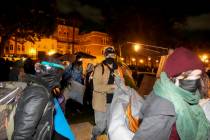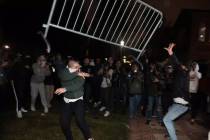New media not filling the gap as newspaper newshole and staffing shrink
So, how’s that getting-all-your-news-for-free-off-the-Internet thing working out for you so far?
How’re those millions of barefoot bloggers pecking away on their tiny keyboards, freely tweeting and Facebooking their information to friends and neighbors, doing at making the old media obsolete and superfluous?
Pew Research Center’s Project for Excellence in Journalism has conducted a study that gives us a glimpse at how that is, in fact, working out. During one week in July of 2009 researchers took a close look at news reporting in Baltimore, Md., focusing on six major news events — who did original reporting, who broke the news, who was most thorough in reporting the news.
They found most of what the public learned about local events that week came from traditional news media, and most of that from the newspaper.
That’s not the say the newspapers are doing as good a job as they once did, considering the economic pinch, but there is little evidence yet of anyone or any news model filling the gap.
“The local papers, however, are also offering less than they once did,” the study found. “For all of 2009, for instance, the Sun produced 32% fewer stories on any subject than it did in 1999, and 73% fewer stories than in 1991, when the company still published an evening and morning paper with competing newsrooms. And a comparison of one major story during the week studied — about state budget cuts — found newspapers in the area produced only one-third as many stories in 2009 as they did the last time the state made a similar round of budget cuts in 1991, and the Baltimore Sun one seventh as many. Yet the numbers suggest the addition of new media has not come close to making up the difference.”
Even when non-traditional news outlets — such as the local police department’s Twitter feed and a local blogger — “broke” stories, it was the traditional media that fleshed out the story and more widely disseminated it until someone took notice.
For example, a blogger reported that the local bus service planned to put listening devices on buses to deter crime. A Baltimore Sun reporter noticed the item and started writing about the plan, which promptly was dropped over privacy concerns.
Here are a couple of key findings from Pew:
— “Among the six major news threads studied in depth — which included stories about budgets, crime, a plan involving transit buses, and the sale of a local theater — fully 83% of stories were essentially repetitive, conveying no new information. Of the 17% that did contain new information, nearly all came from traditional media either in their legacy platforms or in new digital ones.”
— “General interest newspapers like the Baltimore Sun produced half of these stories — 48% — and another print medium, specialty newspapers focused on business and law, produced another 13%”
























